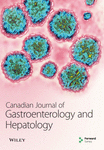Diverticular Disease: Epidemiology and Management
Abstract
Diverticular disease of the colon is among the most prevalent conditions in western society and is among the leading reasons for outpatient visits and causes of hospitalization. While previously considered to be a disease primarily affecting the elderly, there is increasing incidence among individuals younger than 40 years of age. Diverticular disease most frequently presents as uncomplicated diverticulitis, and the cornerstone of management is antibiotic therapy and bowel rest. Segmental colitis associated with diverticula shares common histopathological features with inflammatory bowel disease and may benefit from treatment with 5-aminosalicylates. Surgical management may be required for patients with recurrent diverticulitis or one of its complications including peridiverticular abscess, perforation, fistulizing disease, and strictures and/or obstruction.




